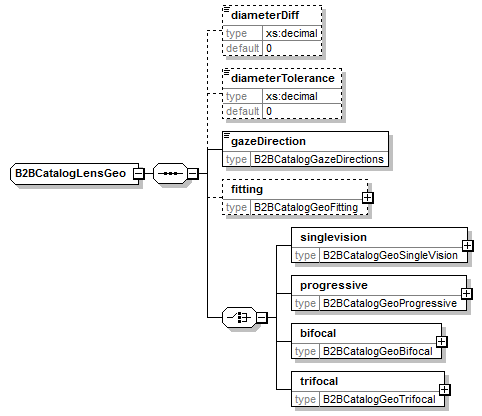en:lenscatalog:version070000:usage:lensgeo
usage of lensGeo
The lensgeo has been reviewed and missing parameters have been added to enable PMS to better calculate and draw lens diameters and e.g. add a plausibility check for minimum fitting heights for progressive lenses.

- DiameterDiff: describes the difference between the horizontal and the vertical dimension of the lens. This allows PMS to draw an elliptic lens in the right dimensions.
- DiameterTolerance: describes the tolerance that should be added to the calculated diameter to ensure that the lens diameter will be sufficient for glazing. Important note: for tolerance of 1mm around the lens (=radius) a diameterTolerance of 2mm is necessary.
- fitting: describes the way the fitting height has to be interpreted. The minimum fitting height is the least fitting height that is necessary to ensure that the lens will work. The recommended fitting height is the heigh that can include some safety buffer to make sure the zones of the lens will not be cut off.
- new reference points: the reference points for the different distances have been standardized and are available now in all 4 directions (nasal, temporal, up and down). In order to be able to draw the different reference points and to calculate the needed diameter of a lens, the geometrical center of the lens (BGC) is given as a pure geometrical starting point. The optical reference is then the PrismReferencePoint (PRP) which refers to the BGC. All further reference points on the lens then refer to the PrismReferencePoint. All references are shown with drawings to better understand the geometry of the lens.
For office/occupational lenses the lensgeo for single vision lenses or progressives is applicable, depending on the respective officelens concept. The DistanceReferencePoint of the lens refers then normally to a shorter distance than infinity (as standard for single vision or progressive lenses).
en/lenscatalog/version070000/usage/lensgeo.txt · Last modified: 2017/05/31 08:33 by nicole.backmann
